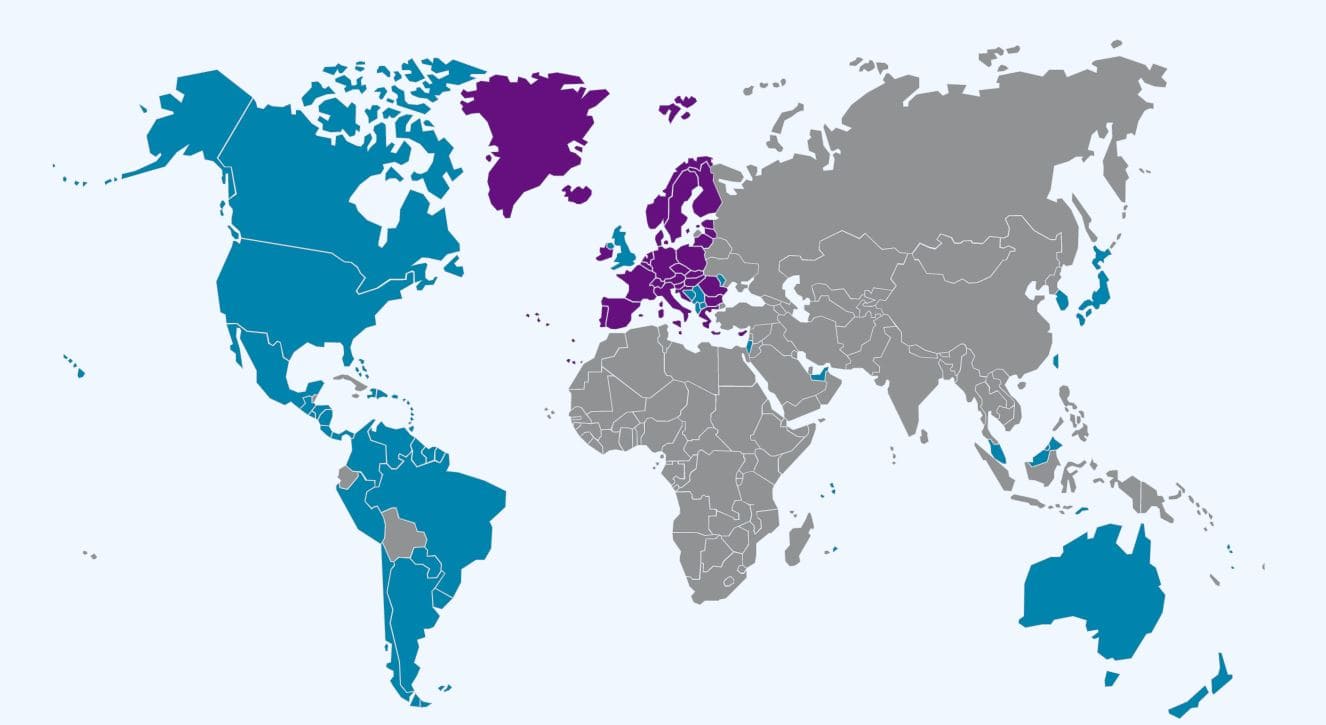
- There are two different types of documents required for short tourist stays in Europe: an ETIAS or a Schengen visa.
- Visa-exempt travellers will need an ETIAS visa waiver, while the rest of third-country travellers will need a Schengen visa.
Europe is the most visited continent in the world. While European Union citizens have free movement around the EU and Schengen Area, non-EU citizens must obtain official permission to enter.
These travellers have to apply for either the ETIAS EU visa waiver or the Schengen visa.
The following page explains which document you need and the key differences between the ETIAS EU visa waiver and the Schengen visa.
DO I NEED AN ETIAS OR A SCHENGEN VISA?
The ETIAS (European Travel Information and Authorisation System) is for citizens of countries who can enter the EU zone visa-free.
Currently, there are over 50 countries outside of the European Union whose citizens can enter the EU Schengen Area without needing a visa.
If you are from one of the visa-exempt countries for Europe, you can currently enter the EU without any travel authorisation.
However, from 2026 the ETIAS visa waiver will start to be a mandatory requirement to enter the EU without a visa.
Those who are not citizens of a visa-waiver country must obtain a Schengen visa instead. Without a valid visa they do not have permission to enter the Schengen Area.
If you are eligible for the ETIAS EU visa waiver you are not required to apply for the Schengen visa. However, if you are not eligible for the ETIAS you must apply for a Schengen visa.
When ETIAS is fully introduced in 2026 , all non-EU travellers must have either the ETIAS visa waiver or a Schengen visa.
KEY DIFFERENCES BETWEEN ETIAS AND A SCHENGEN VISA
An EU visa waiver and a Schengen visa both give the holder permission to enter the Schengen Area, however they are different in a number of ways.
Below are some of the key differences between these 2 travel documents.
EU TRAVEL AUTHORISATION VS. VISA
One of the main differences between the ETIAS and a Schengen visa is that ETIAS is a travel authorisation and not a visa. It allows the holder to travel to the Schengen Area without a visa, while a Schengen visa is for travellers who are not visa-exempt.
DIFFERENT TYPES OF EU VISA
The ETIAS application form has just 1 option. The traveller does not have to choose an option for their travel authorisation. In contrast, there are different types of Schengen visa to choose from, such as single or multiple entry.
ELECTRONIC VS. PAPER VISA
ETIAS is completely electronic. It is digitally connected to the traveller’s passport, making it entirely paperless.
A Schengen visa is a physical paper document which is manually inserted into the holder’s passport.
APPLICATION PROCESS: ETIAS VS. SCHENGEN VISA
The process for obtaining an ETIAS or a Schengen visa is different. Visa-exempt travellers can get an ETIAS visa waiver online, while those who are not eligible for ETIAS must apply for a Schengen visa in person at an embassy or consulate.
Each document has just 1 application method. You cannot apply for an ETIAS travel authorisation in person, and you cannot request a Schengen visa online.
COUNTRIES ACCESSIBLE WITH ETIAS OR SCHENGEN VISA
An ETIAS travel authorisation is automatically valid for use in all Schengen nations, as well as EU microstates. The visa waiver is not connected to any specific country.
A Schengen visa also allows the holder to travel to all Schengen Area states, however you must apply for the document through 1 nation’s diplomatic mission.

